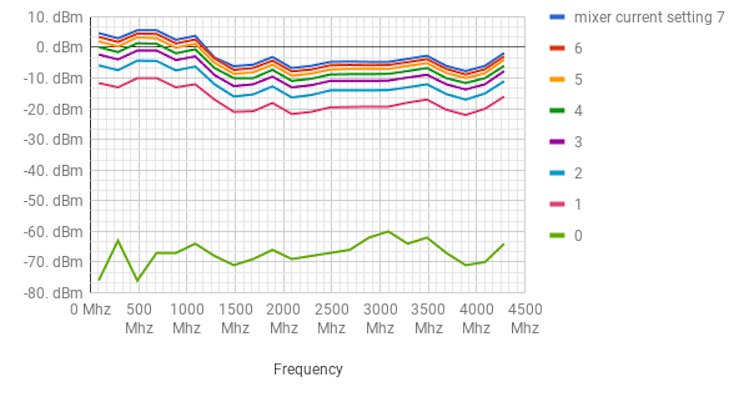-
set frequency to 1234567890 (0x00000000499602D2 in hex, 64 bits):
sent hid report (16 bytes): 0x77,0x81,0x00,0x00,0x00,0x00,0x49,0x96,0x02,0xD2,0x00,0x00,0x00,x00,0x00,0x00
reply from moRFeus (16 bytes):
0x77,0x81,0x00,0x00,0x00,0x00,0x49,0x96,0x02,0xD2,0x00,0x00,0x00,x00,0x00,0x00
-
get frequency:
sent hid report (16 bytes): 0x72,0x81,0x00,0x00,0x00,0x00,0x00,0x00,0x00,0x00,0x00,0x00,0x00,x00,0x00,0x00
reply from moRFeus (16 bytes):
0x72,0x81,0x00,0x00,0x00,0x00,0x49,0x96,0x02,0xD2,0x00,0x00,0x00,x00,0x00,0x00
-
set mixer mode:
sent hid report (16 bytes): 0x77,0x82,0x00,0x00,0x00,0x00,0x00,0x00,0x00,0x00,0x00,0x00,0x00,x00,0x00,0x00
reply from moRFeus (16 bytes):
0x77,0x82,0x00,0x00,0x00,0x00,0x00,0x00,0x00,0x00,0x00,0x00,0x00,x00,0x00,0x00
-
set generator mode:
sent hid report (16 bytes): 0x77,0x82,0x00,0x00,0x00,0x00,0x00,0x00,0x00,0x01,0x00,0x00,0x00,x00,0x00,0x00
reply from moRFeus (16 bytes):
0x77,0x82,0x00,0x00,0x00,0x00,0x00,0x00,0x00,0x01,0x00,0x00,0x00,x00,0x00,0x00
-
get mode (mixer/generator):
sent hid report (16 bytes): 0x72,0x82,0x00,0x00,0x00,0x00,0x00,0x00,0x00,0x00,0x00,0x00,0x00,x00,0x00,0x00
reply from moRFeus (16 bytes) when in mixer mode:
0x72,0x82,0x00,0x00,0x00,0x00,0x00,0x00,0x00,0x00,0x00,0x00,0x00,x00,0x00,0x00
reply from moRFeus (16 bytes) when in generator mode:
0x72,0x82,0x00,0x00,0x00,0x00,0x00,0x00,0x00,0x01,0x00,0x00,0x00,x00,0x00,0x00
general: first byte is 0x72 for “get”-ing and 0x77 for “set”-ing. second byte is 0x81 for frequency, 0x82 for function (mixer/generator), 0x83 for mixer current, 0x84 for biastee on(1) and off(0). Value to be set is sent in the next eight bytes (and returned in those eight bytes), and after these 10 bytes (1+1+8), 6 bytes of zero padding is sent.
Please note this is as the protocol works in raw form. Depending upon OS and libraries used, there might be complications (for example windows expects an extra byte to be sent before the sent report).

 Setting bias tee to on supplies about 5V to the RF IN antenna
Setting bias tee to on supplies about 5V to the RF IN antenna